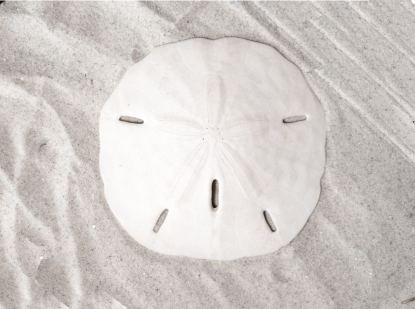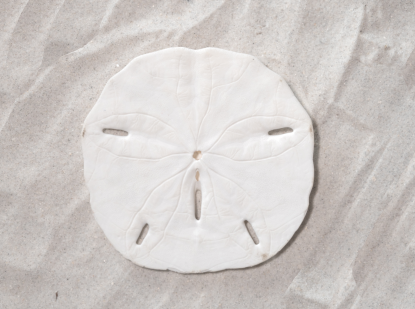

Mellita tenuis
The Mellita tenuis is native to Florida’s Gulf Coast. Sand Dollars, sea biscuits and sea stars are echinoderms (Greek, meaning spiny skin). The white Sand Dollar found on the beach is actually a bone-like inner structure called a test. Counting the rings on the Sand dollar can determine its age which can be up to ten years.
Live animals have a soft brownish purple covering of moveable spines and hairs. They use these to locomote along sandy bottoms and over food particles such as algae and tiny animals. Their bottom center located mouth has five tooth-like sections used to “chew” their food. The spines on top also serve as gills.
The 5 "keyholes" provide a shortcut in moving food to the mouth and also allow them to sink into the sand. In calm water, they bury themselves on edge, leaving one half protruding above the sand. In rougher conditions they lie flat or burrow into the sand. When continuously exposed to turbulent water, they can grow to be thicker and stronger.
Sand Dollars can only live a few minutes out of the water. Please do not remove live specimens from the water.
Live shells should never be taken from any Florida State Park.